Home> Company News> Unveiling Miniature Deep Groove Ball Bearings: Precision in Miniature
- AddressTianqiao, Beiyuan District, Jinan,Shandong
- Factory Addresstian qiao,jinan, shandong,China(Mainland)
- Worktime9:00-18:00(Beijing time)
- Phone(Working Time)86 0531-8299 9952
- Fax86 0531 -82990353
In the world of engineering and manufacturing, precision plays a paramount role in achieving exceptional performance, especially when it comes to miniature components. Miniature deep groove ball bearings, often overshadowed by their larger counterparts, are the unsung heroes of precision in miniature applications. This article delves into the intricate world of miniature deep groove ball bearings, shedding light on their definition, significance in precision engineering, and the fascinating journey of their historical development.
Definition and Overview of Miniature Deep Groove Ball Bearings
Let's begin by understanding what miniature deep groove ball bearings are. These bearings belong to the family of deep groove ball bearings but are designed specifically for miniature applications. They are characterized by their compact size and exceptional precision, making them ideal for various industries and applications where space is limited, and precision is of utmost importance.
The Significance of Precision Engineering in Miniature Bearings
Precision engineering is the backbone of any miniature component, and miniature deep groove ball bearings are no exception. Their precision is essential for ensuring smooth and reliable operation in miniature systems, where even the slightest deviation can have significant consequences. We'll explore how precision engineering principles are applied to these bearings to achieve the highest level of accuracy.
Historical Context and Development of Miniature Deep Groove Ball Bearings
To truly appreciate the value of miniature deep groove ball bearings, we'll take a step back in time and explore their historical context and development. From their humble beginnings to the advanced manufacturing processes of today, these bearings have come a long way, constantly evolving to meet the demands of modern technology.

Structure and Functionality
To truly appreciate the precision and performance of miniature deep groove ball bearings, it's crucial to understand their intricate design and construction. we'll delve into the structure and functionality of these remarkable components, shedding light on how they handle both radial and axial loads in miniature applications. Additionally, we'll explore the critical role played by different components in ensuring the functionality of miniature deep groove ball bearings.
Explanation of the Design and Construction
Miniature deep groove ball bearings are engineered with utmost precision to meet the demanding requirements of miniature applications. Their design and construction are a testament to precision engineering. These bearings consist of several key components, including an outer ring, an inner ring, a cage, balls, and seals. Each component plays a crucial role in ensuring the bearing's durability and efficiency.
The outer ring provides structural support and houses the bearing's components, while the inner ring is responsible for shaft mounting. The cage keeps the balls evenly spaced and allows for smooth rotation. The balls themselves are precision-made, providing low friction and high load-carrying capacity. Seals protect the internal components from contaminants, ensuring long-lasting performance.
Handling Radial and Axial Loads in Miniature Applications
Miniature deep groove ball bearings are designed to handle both radial and axial loads, making them versatile in various applications. Radial loads act perpendicular to the axis of rotation, while axial loads act parallel to the axis. These bearings excel at accommodating radial loads due to their deep raceway grooves and ball design, which distribute the load evenly.
In miniature applications, where space is limited, these bearings are essential for achieving efficient load distribution. They are capable of handling high radial loads, making them ideal for miniature machinery and equipment.
The Role of Different Components in Functionality
Each component of a miniature deep groove ball bearing serves a specific function in ensuring its overall functionality. The outer and inner rings provide stability and support, allowing the bearing to maintain its structural integrity under load. The cage ensures that the balls remain evenly spaced, reducing friction and preventing contact between them. The precision-made balls contribute to low friction and high load-carrying capacity, essential for smooth operation.
Seals, although often overlooked, play a critical role in protecting the internal components from contaminants such as dust and moisture. This protection is vital for extending the bearing's lifespan and maintaining its precision.
In summary, the design and construction of miniature deep groove ball bearings are a testament to precision engineering, allowing them to handle both radial and axial loads efficiently. Each component plays a vital role in ensuring the bearing's functionality and longevity, making them indispensable in miniature applications.
Applications and Industries
Miniature deep groove ball bearings, with their precision engineering and versatile design, find applications across a wide range of industries. we will explore the diverse industries that heavily rely on these bearings. We will also delve into specific applications where miniature deep groove ball bearings excel, with a particular focus on robotics and medical devices. Real-world examples will highlight how these bearings enhance precision and performance in various applications.
Diverse Industries Relying on Miniature Deep Groove Ball Bearings
|
Robotics |
Miniature deep groove ball bearings are indispensable in the field of robotics. These bearings offer exceptional precision and low friction, making them ideal for various robotic components, including joints, arms, and wheels. They enable smooth and precise movement in robotic systems, contributing to overall efficiency. |
|
Medical Devices |
The medical industry benefits significantly from miniature deep groove ball bearings. These bearings are commonly used in medical devices such as surgical instruments, dental equipment, and diagnostic devices. Their precision and reliability are crucial for maintaining the high standards required in healthcare. |
|
Aerospace |
In aerospace applications, where every component must meet strict quality and reliability standards, miniature deep groove ball bearings play a vital role. They are used in aircraft navigation systems, actuators, and control systems, ensuring accurate and dependable performance in challenging environments. |
|
Electronics |
Miniature bearings are essential in electronics manufacturing, where precise and consistent movement is required. They are used in everything from hard drives and printers to camera lenses and optical equipment. Their small size and high precision make them ideal for miniaturized electronic components. |
|
Automotive |
The automotive industry relies on miniature deep groove ball bearings for various applications, including power steering systems, window regulators, and air conditioning compressors. These bearings contribute to the smooth operation of critical automotive components.
|
Specific Applications in Robotics and Medical Devices
Robotics: In robotics, miniature deep groove ball bearings are commonly used in the joints of robotic arms, enabling precise and smooth movements. They are also essential in wheel assemblies, ensuring mobility and stability. The low friction and high precision of these bearings play a crucial role in the overall performance of robotic systems.
Medical Devices: Miniature bearings are found in various medical devices, such as surgical robots, dental drills, and imaging equipment. For surgical robots, these bearings enable precise and controlled movements during procedures, ensuring minimal invasiveness and higher success rates. Dental drills benefit from the smooth and efficient operation of miniature bearings, enhancing patient comfort and safety.
Real-World Examples of Precision and Performance Enhancement
Let's look at a real-world example in the robotics industry. A company specializing in the development of collaborative robots has integrated miniature deep groove ball bearings into the joints of their robotic arms. This integration has resulted in increased precision, allowing the robots to perform delicate tasks with accuracy. These robots are now widely used in industries requiring precise automation, such as electronics manufacturing and quality control.
In the medical field, an example comes from the use of miniature bearings in robotic-assisted surgeries. Surgeons benefit from enhanced precision and stability when performing intricate procedures. Patients experience reduced trauma and faster recovery times, thanks to the precise movements enabled by miniature deep groove ball bearings.
In conclusion, miniature deep groove ball bearings are vital components across diverse industries. Their precision and versatility make them indispensable in applications ranging from robotics to medical devices, contributing to enhanced performance, precision, and efficiency. Real-world examples highlight their significant impact on various industries.
Advantages and Challenges
Miniature deep groove ball bearings offer a multitude of advantages that cater to specific engineering needs. we will enumerate the advantages of using these bearings, highlighting their compact size and low friction characteristics. However, it's important to recognize that challenges also exist in miniature bearing applications. We will discuss common challenges and maintenance considerations that engineers and manufacturers should be aware of. Additionally, we will explore strategies to optimize the performance and extend the lifespan of miniature deep groove ball bearings.
Advantages of Miniature Deep Groove Ball Bearings
Compact Size: One of the standout advantages of miniature deep groove ball bearings is their small and lightweight design. This compact size allows for space-saving solutions in various applications, especially where installation space is limited.
Low Friction: Miniature bearings are engineered to minimize friction and energy loss. Their smooth operation ensures efficient performance, making them ideal for applications where energy conservation is critical.
High Precision: Precision engineering is a hallmark of miniature deep groove ball bearings. They offer exceptional accuracy and repeatability, making them suitable for applications that demand precision, such as medical devices and robotics.
Versatility: Miniature bearings are versatile and can handle both radial and axial loads, making them adaptable to a wide range of applications. Their versatility contributes to reduced design complexity.
Durability: Despite their small size, miniature bearings are designed to withstand harsh conditions and heavy use. They are built to last, providing long-term reliability in critical applications.
Challenges and Maintenance Considerations
Lubrication: Proper lubrication is essential for the smooth operation of miniature deep groove ball bearings. Challenges arise when selecting the right lubricant for specific applications and ensuring consistent lubrication over time.
Contamination: Miniature bearings are susceptible to contamination from dust, debris, and foreign particles. Effective sealing and maintenance practices are necessary to prevent contamination-related issues.
Overloading: In some applications, miniature bearings may be subjected to loads exceeding their capacity. This can lead to premature wear and failure. Engineers must carefully consider load factors during the design phase.
Misalignment: Misalignment can place undue stress on miniature bearings, affecting their performance and lifespan. Proper alignment and regular maintenance are essential to address this challenge.
Strategies for Optimization
To optimize the performance and extend the lifespan of miniature deep groove ball bearings, consider the following strategies:
Select the Right Lubricant: Choose a lubricant that suits the application's requirements, taking into account factors such as speed, temperature, and load. Implement a regular lubrication schedule to maintain optimal conditions.
Effective Sealing: Utilize effective sealing solutions to protect bearings from contaminants. Regularly inspect seals and replace them as needed.
Load Analysis: Conduct a thorough load analysis to ensure that bearings are not subjected to excessive loads. Adjust designs or choose bearings with higher load capacities when necessary.
Proactive Maintenance: Implement a proactive maintenance program that includes regular inspections, cleaning, and lubrication. Replace bearings at recommended intervals to prevent unexpected failures.
In conclusion, miniature deep groove ball bearings offer several advantages, including compact size, low friction, high precision, versatility, and durability. However, engineers and manufacturers must also address challenges related to lubrication, contamination, overloading, and misalignment. By implementing proper maintenance practices and load analysis, these challenges can be mitigated, ensuring the optimized performance and extended lifespan of miniature bearings in various applications.
Bearing Selection and Maintenance
Selecting the right miniature deep groove ball bearings for precision applications is crucial to achieving optimal performance. we will discuss the key factors to consider when choosing miniature bearings, as well as proper maintenance practices to ensure their extended lifespan and reliability. Additionally, we'll emphasize the critical role of lubrication and monitoring in managing miniature bearing performance.
Factors for Bearing Selection in Precision Applications
Load Capacity: Evaluate the expected radial and axial loads in your application. Choose miniature bearings with appropriate load capacities to ensure they can handle the anticipated forces without premature wear or failure.
Accuracy Requirements: Precision applications demand high levels of accuracy. Miniature bearings are available in various accuracy classes. Select bearings that meet or exceed the required precision standards for your application.
Speed and Temperature: Consider the operating speed and temperature range of your application. Ensure that the selected bearings can operate efficiently within these parameters. High-speed or high-temperature applications may require specific bearing designs.
Sealing and Shielding: Assess the need for sealing or shielding to protect the bearings from contamination and retain lubrication. Sealed bearings are suitable for applications where cleanliness is essential.
Lubrication Compatibility: Different lubricants have varying effects on bearing performance. Ensure compatibility between the lubricant and the bearing material. Consider specialized lubrication for extreme conditions.
Mounting and Fit: Proper mounting and fit are crucial for miniature bearings. Follow manufacturer recommendations for tolerances and fits to prevent misalignment and excessive stress on the bearings.
Space Constraints: Miniature bearings are often chosen for their compact size. Ensure that the selected bearings fit within the available space in your application without causing interference issues.
Proper Maintenance Practices for Miniature Bearings
Regular Inspection: Implement a regular inspection schedule to monitor the condition of miniature deep groove ball bearings. Check for signs of wear, damage, or contamination.
Cleaning: Keep the bearings and their surrounding components clean to prevent the ingress of contaminants. Use appropriate cleaning agents and methods to avoid damage.
Lubrication: Lubrication is critical for reducing friction and preventing premature wear. Follow the manufacturer's lubrication recommendations and intervals. Ensure that the lubricant used is compatible with the bearing material.
Monitoring: Implement condition monitoring techniques, such as vibration analysis and temperature monitoring, to detect early signs of bearing problems. Timely detection can prevent costly failures.
Re-lubrication: Bearings may require re-lubrication during their service life. Follow guidelines for re-lubrication intervals and quantities to maintain optimal performance.
Replacement: When miniature bearings reach the end of their service life or exhibit signs of irreparable damage, replace them promptly to prevent downtime and potential damage to other components.
Importance of Lubrication and Monitoring
Lubrication plays a vital role in managing miniature bearing performance. Proper lubrication reduces friction, dissipates heat, and minimizes wear. It also prevents corrosion and contamination. Regular monitoring ensures that the lubricant remains effective and that any issues are identified and addressed promptly. Monitoring can help detect abnormal operating conditions, such as increased vibration or temperature, indicating a potential problem with the bearings.
In conclusion, selecting the right miniature deep groove ball bearings for precision applications involves considering factors such as load capacity, accuracy requirements, speed, temperature, sealing, lubrication, mounting, and space constraints. Proper maintenance practices, including regular inspection, cleaning, lubrication, and monitoring, are essential to ensure extended lifespan and reliability. Lubrication and monitoring, in particular, are critical aspects of managing miniature bearing performance, helping to prevent costly downtime and maintain precision in miniature applications.
Future Trends and Innovations
As we delve into the world of miniature deep groove ball bearings, it's crucial to explore the latest developments and innovations that are shaping the future of these precision components. we will delve into how technology is driving advancements in materials and design, and the potential implications of these innovations for various industries within the miniature bearing sector.
Exploring the Latest Developments
The miniature deep groove ball bearing industry is not immune to the rapid pace of technological advancements. Engineers and researchers continuously strive to improve the performance and capabilities of these small yet critical components. Here are some of the recent developments:
Advanced Materials: Innovations in materials science have led to the creation of new bearing materials with enhanced properties. These materials exhibit improved corrosion resistance, increased durability, and enhanced load-carrying capabilities. Nanotechnology is also playing a role in creating ultra-miniature bearings with exceptional performance.
Precision Manufacturing: Miniature bearings require exceptional precision in their manufacturing processes. Recent advancements in machining and quality control techniques have enabled manufacturers to produce bearings with tighter tolerances and better surface finishes. This results in reduced friction, improved accuracy, and extended bearing life.
Smart Bearings: The integration of sensors and monitoring systems into miniature bearings is on the horizon. Smart bearings have the potential to provide real-time data on their operating conditions, including temperature, vibration, and load. This data can be used for predictive maintenance and performance optimization.
How Technology Shapes the Future
Technology is not only influencing the materials and manufacturing processes of miniature deep groove ball bearings but also their design and application. Here's how technology is shaping the future of these bearings:
|
Miniaturization |
Advances in microfabrication techniques are enabling the creation of even smaller bearings with precise dimensions. These ultra-miniature bearings find applications in industries such as medical devices, where space is at a premium. |
|
Energy Efficiency |
Energy-efficient bearings are in demand across industries. New bearing designs and materials are being developed to reduce friction and energy consumption. This is particularly relevant in industries where energy efficiency is critical, such as automotive and aerospace. |
|
Customization |
Technology allows for the customization of miniature bearings to meet specific application requirements. This includes tailoring bearing designs, materials, and lubrication for optimal performance in unique environments. |
Implications for Various Industries
The innovations in miniature deep groove ball bearings have significant implications for a range of industries that rely on precision components. Some noteworthy sectors include:
Medical Devices: Ultra-miniature bearings are essential for medical devices such as surgical instruments and diagnostic equipment. Advancements in materials and manufacturing processes enhance the reliability of these critical applications.
Robotics: The robotics industry benefits from compact, high-precision bearings that enable smoother motion and higher accuracy. Smart bearings with real-time monitoring capabilities can contribute to the performance and safety of robotic systems.
Aerospace: In the aerospace sector, the pursuit of lightweight and durable components is ongoing. Bearings that offer reduced friction and longer life contribute to increased fuel efficiency and reduced maintenance costs.
Automotive: Energy-efficient bearings play a vital role in modern vehicles, where fuel efficiency and reduced emissions are priorities. Advancements in bearing technology can aid in achieving these goals.
In conclusion, technology continues to drive innovations in miniature deep groove ball bearings, with advancements in materials, manufacturing, and smart capabilities. These innovations have far-reaching implications for industries that rely on precision components, including medical devices, robotics, aerospace, and automotive. As technology evolves, so too will the capabilities and applications of miniature bearings in the pursuit of precision in miniature.
Conclusion
In the journey to unveil the world of miniature deep groove ball bearings, we have traversed the intricate landscape of these precision-engineered components. As we conclude this exploration, let us summarize the key takeaways and emphasize the pivotal role miniature deep groove ball bearings play in enhancing precision and efficiency in miniature applications.
Key Takeaways
Precision in Miniature: Miniature deep groove ball bearings are precision-engineered to deliver exceptional performance in compact applications. Their ability to handle radial and axial loads with remarkable accuracy makes them indispensable in industries where precision is paramount.
Diverse Applications: These miniature bearings find their place in a wide range of industries, from medical devices and robotics to aerospace and automotive. Their compact size, low friction, and reliability contribute to improved efficiency and functionality in various systems.
Advantages and Challenges: We've discussed the advantages of using miniature bearings, including their compact design, low friction, and energy efficiency. However, it's essential to acknowledge the challenges they may face, such as maintenance considerations in miniature applications.
Enhancing Precision and Efficiency
Miniature deep groove ball bearings are the unsung heroes of precision engineering. Their ability to operate seamlessly in confined spaces and provide exceptional accuracy ensures that miniature systems function at their best. These bearings reduce friction, minimize energy consumption, and contribute to extended service life.
Continued Exploration and Adoption
As technology continues to advance, the future holds promising innovations in the world of miniature bearings. From advanced materials to smart bearing technologies, there is much to anticipate. We encourage engineers, researchers, and industries to embrace these innovations, further enhancing the precision and efficiency of miniature applications.
In conclusion, miniature deep groove ball bearings are a testament to the remarkable capabilities of precision engineering. Their role in delivering accuracy and efficiency in miniature systems cannot be overstated. As we move forward, let us recognize and appreciate the significance of these miniature components in the grand machinery of precision in miniature.

FAQs: Common Questions About Miniature Deep Groove Ball Bearings
As we wrap up our journey into the world of miniature deep groove ball bearings and their precision applications, it's essential to address some common questions that often arise regarding these remarkable components. Let's dive into these frequently asked questions and provide insightful answers.
What Are Miniature Deep Groove Ball Bearings?
Miniature deep groove ball bearings are compact, precision-engineered components designed to handle radial and axial loads with remarkable accuracy. They are smaller versions of standard deep groove ball bearings, ideal for applications where space is limited, and precision is crucial.
Where Are Miniature Bearings Used?
Miniature bearings find applications in a wide range of industries, including robotics, medical devices, aerospace, automotive, and electronics. They are essential in systems where precision, compactness, and low friction are required.
What Advantages Do Miniature Bearings Offer?
Miniature deep groove ball bearings offer several advantages, including their compact size, low friction, high precision, and energy efficiency. These characteristics make them indispensable in applications demanding precision and reliability.
What Are the Common Challenges in Using Miniature Bearings?
While miniature bearings offer many benefits, they also come with specific challenges. One of the common challenges is proper maintenance, as these compact components can be sensitive to contamination and wear. Ensuring suitable lubrication and monitoring is crucial.
Are There Innovations in Miniature Bearing Technology?
Yes, the field of miniature bearings continues to advance with innovations in materials and design. Smart bearing technologies and materials like ceramics are being explored, offering potential advancements in precision and performance.
How Can I Select the Right Miniature Bearings for My Application?
Selecting the right miniature bearings involves considering factors like load capacity, speed, operating environment, and dimensional requirements. Collaborating with bearing experts and manufacturers can help you make informed choices.
What Role Do Miniature Bearings Play in Precision Engineering?
Miniature deep groove ball bearings are integral to precision engineering, as they ensure accurate motion control, reduce energy consumption, and enhance overall system efficiency. Their role in precision applications cannot be overstated.
Where Can I Find Quality Miniature Bearings?
Quality miniature bearings are available from reputable bearing manufacturers and distributors. It's essential to source bearings from trusted suppliers to ensure reliability and performance.
In conclusion, miniature deep groove ball bearings are precision-engineered components that have a significant impact on various industries, enhancing precision and efficiency in miniature applications. By understanding their capabilities, advantages, and potential challenges, engineers and professionals can harness the full potential of these miniature marvels in their projects.


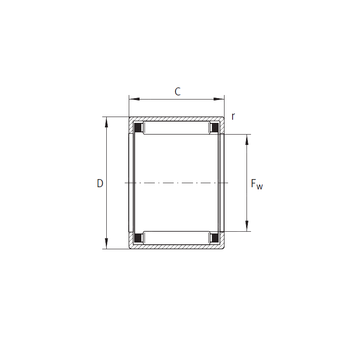 SCE5612 INA Needle Roller Bearings
SCE5612 INA Needle Roller Bearings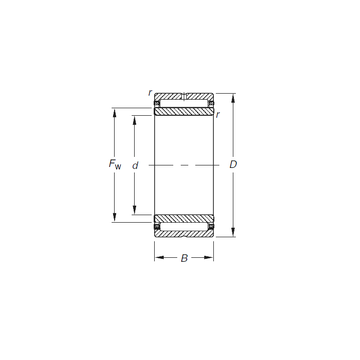 NKJ20/16 Timken Needle Roller Bearings
NKJ20/16 Timken Needle Roller Bearings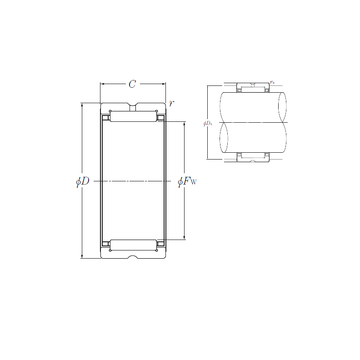 RNA4976 NTN Needle Roller Bearings
RNA4976 NTN Needle Roller Bearings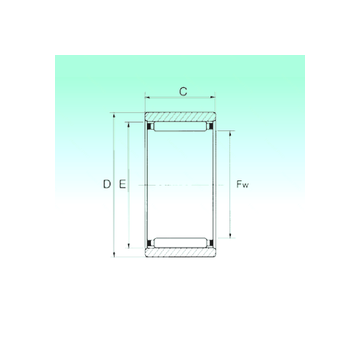 RNAO 35x47x16 NBS Needle Roller Bearings
RNAO 35x47x16 NBS Needle Roller Bearings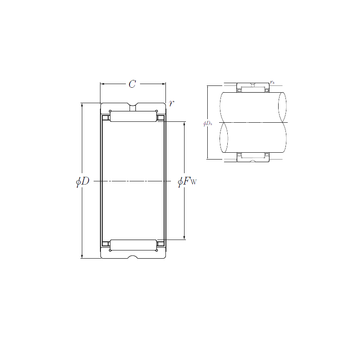 NK42/20R NTN Needle Roller Bearings
NK42/20R NTN Needle Roller Bearings